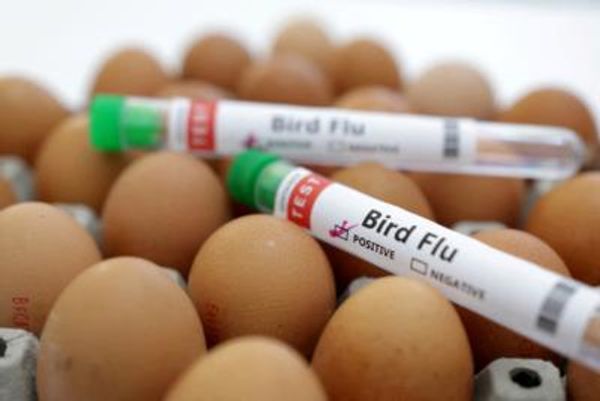Someday, astronauts may be able to eat a steak made from plastic — or discarded potato peels — while floating far beyond Earth's atmosphere.
Why it matters: As software continues to invade our kitchens, 3D-printed food systems are being explored by scientists and startups trying to figure out what astronauts would eat on deep space missions.
Driving the news: Ohio-based startup Beehex first revealed their plans for a "container" bioreactor that makes 3D-printed meals derived from plastic waste at the CES 2023 tech conference in January.
Details: Converting plastic waste into something edible is the brainchild of a Michigan Tech lab, where researchers are using microbes that feed on plastic.
- Stephen Techtmann, who runs the lab, described the process as taking the plastic to "break it down, feed it to microorganisms and then recover those microbial cells as a food product," per MLive.
- The 3D printing team at Beehex is now taking the resulting biomass and making "palatable foods," says Anjan Contractor, Beehex co-founder and NASA-affiliated engineer.
How it works: Beehex's 3D food processing machinery uses a specially designed extruder — which is the piece of a 3D printer that essentially melts and pushes out a filament to create layered parts.
- The extruder aligns fibers and builds textures — chewy, crunchy or soft — into ingredients, like a granular powder form of once-plastic biomass, before the 3D printer creates the shape.
- In that process, the printer can be customized to add missing micronutrients, flavors and taste profiles to the biomass, creating "a variety of different foods" — like a steak re-created out of plastic.
Reality check: The project is in the very early stages of development — so it's up in the air whether a dish originally made from the "cells produced when the bacteria feed off the plastic" would actually pass a federal food safety check.
The intrigue: Thinking even further ahead, the Beehex team is also working to provide astronauts the ability to one day turn excess waste produced during space farming into meals.
- One example: "If they are growing beets, the entire plant cannot be consumable. You have the roots which are consumable, but it's the other parts, leaves and stems and some of the roots, they will be thrown away. ... This thrown away part is something that we collect," says Contractor.
- After dehydrating it and milling it into a grinder, the system would then store the unwanted produce into sealed cartridges, which becomes "feedstock" for 3D food printing in zero gravity — and means ingredients with an extended shelf life of 10 to 20 years.
- When paired with a 3D food printer, this could produce "a wide range of foods, including alternative meat cuts, vegetables, fruits, breads, chips, desserts" with personalized nutrition value.
Yes, but: NASA does not have a plan to integrate any food processing machinery as of now, according to Contractor.
- The Department of Defense is where Beehex is currently finding "main funding interest." (DARPA invested $1 million into its 3D-printer that converts biomass derived from plastic into palatable foods.)
The big picture: In partnership with the Canadian Space Agency, NASA is currently in the second round of the Deep Space Food Challenge.
- Participants are building prototypes of sustainable, low-waste solutions for producing food that would sustain a crew of four on a three-year deep space mission.
- Winners of this round will be internally selected Wednesday, says Ralph Fritsche, exploration food systems expert for the Deep Space Food Challenge and member of its judging panel.
What they're saying: A NASA senior project manager for space crop production, Fritsche tells Axios that several submissions in the running involve 3D-printing technologies — which is in no way a “near-term solution” in feeding astronauts exploring deep space.
- "Looking ahead to this future, where I have surface outposts that may be permanently crewed, it's that variety of foods that really is useful," says Fritsche of its far-off potential.
- He notes that having a limited variety of menu options over a long period of time is when "menu fatigue" plays a role, which has a psychological impact that can lead to poor health outcomes.
The bottom line: "The more infrastructure that's required to develop the food products, the more space, the more in the future it's going to take," says Fritsche.







